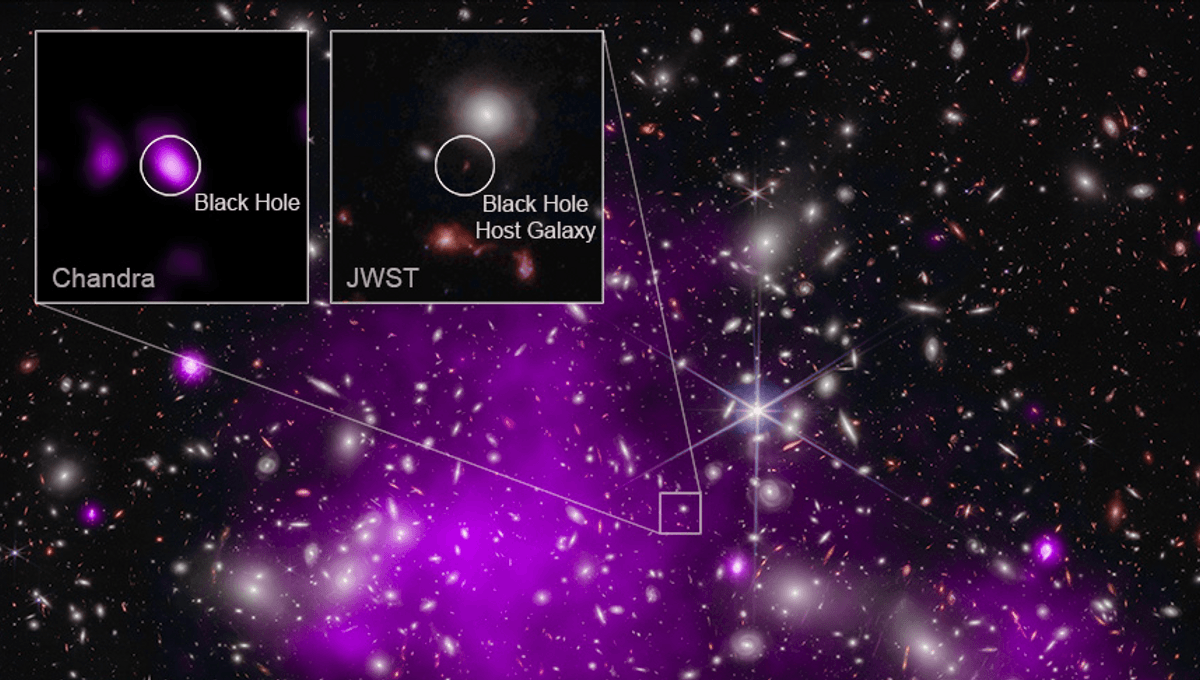
Astronomers have found the most distant supermassive black hole yet. Its light comes from when the universe was just 470 million years old, and the record-breaking object certainly is supermassive. Its discovery provides new insight into how these gargantuan objects came to exist.
The object is called UHZ1 and it was discovered thanks to the phenomenon called gravitational lensing. Astronomers aimed NASA’s Chandra X-ray Observatory and JWST towards the galaxy cluster Abell 2744, located 3.5 billion light-years from Earth. The cluster is so dense that it warps space-time in such a way that space-time itself acts as a lens, magnifying the light of objects behind the galaxy cluster. Among those objects was the host galaxy of UHZ1.
Using JWST, researchers were able to measure just how far this galaxy is. We are seeing it as it was when the universe was just 3 percent of its current age. Two weeks of observations with Chandra revealed the telltale signs of a growing supermassive black hole: superheated gas shining in X-rays.
They estimate it to be between 10 and 100 million times the mass of the Sun. That is bigger than what our supermassive black hole that lies at the center of the Milky Way weighs today. Sagittarius A* is about 4.6 million times the mass of the Sun. UHZ1 is absolutely enormous for that time so early in the universe.
“There are physical limits on how quickly black holes can grow once they’ve formed, but ones that are born more massive have a head start. It’s like planting a sapling, which takes less time to grow into a full-size tree than if you started with only a seed,” Andy Goulding of Princeton University, co-author of one paper and lead author of a second, said in a statement.
UHZ1 has roughly the same mass as all the stars in its galaxy. It is about 10 times bigger than it should be, but its unusual size might provide evidence for how these objects came to be. Supermassive black holes could form from the collision of many big black holes from when very massive stars go supernova or they might form from the direct collapse of a gas cloud.
This latter view has been theorized in the ‘Outsize Black Hole’ hypothesis by co-author Priyamvada Natarajan of Yale University in 2017. The observations of UHZ1 match very well the expectation for such a scenario.
“We think that this is the first detection of an ‘Outsize Black Hole’ and the best evidence yet obtained that some black holes form from massive clouds of gas,” explained Natarajan. “For the first time, we are seeing a brief stage where a supermassive black hole weighs about as much as the stars in its galaxy before it falls behind.”
One study is set to be published in Nature Astronomy (preprint available). The second study is published in the Astrophysical Journal Letters.
Source Link: Oldest Black Hole Discovered Dating To Just 470 Million Years After Big Bang